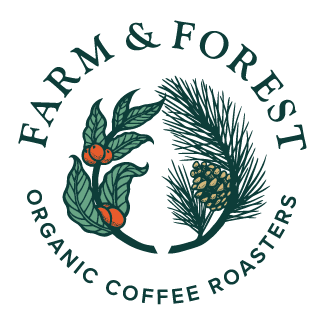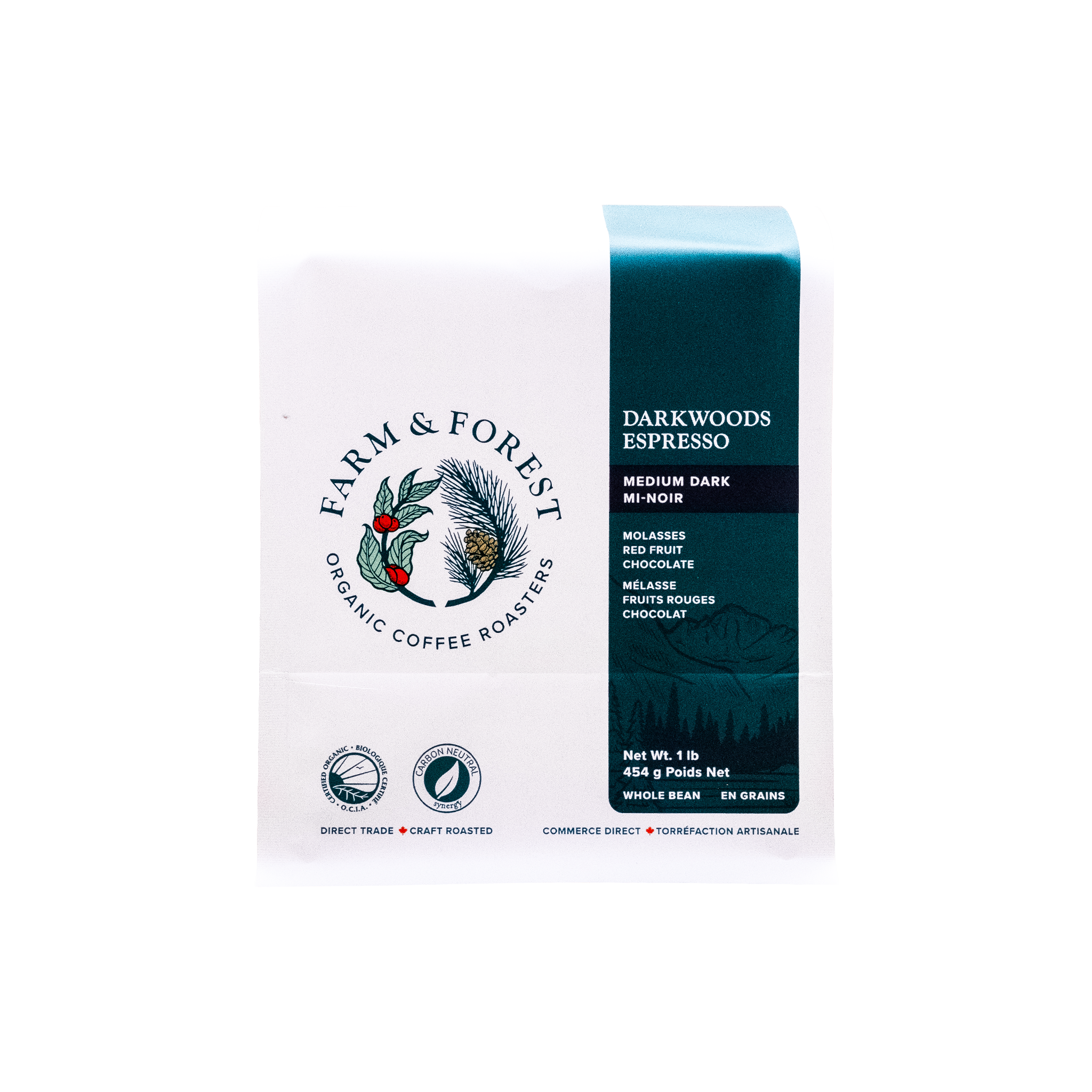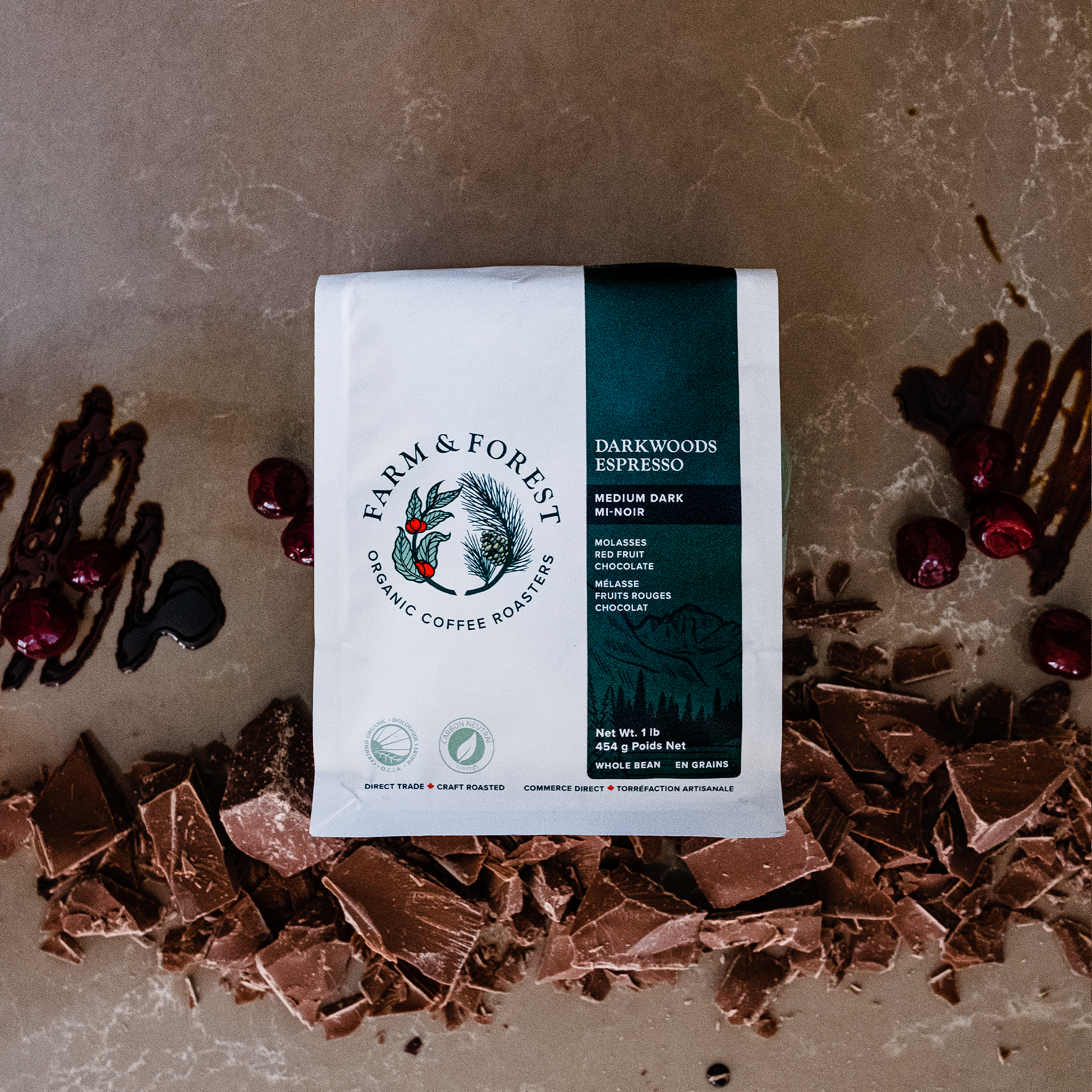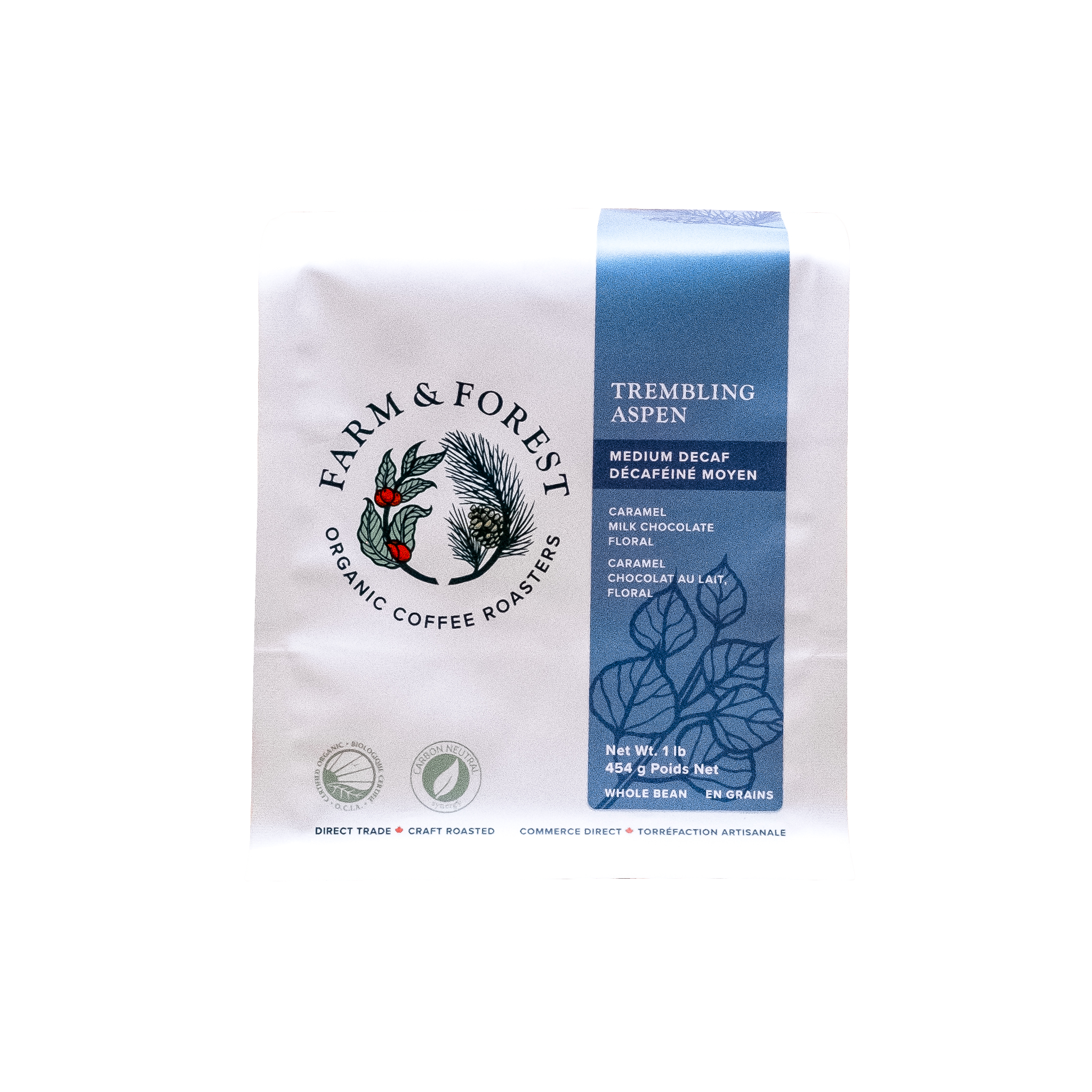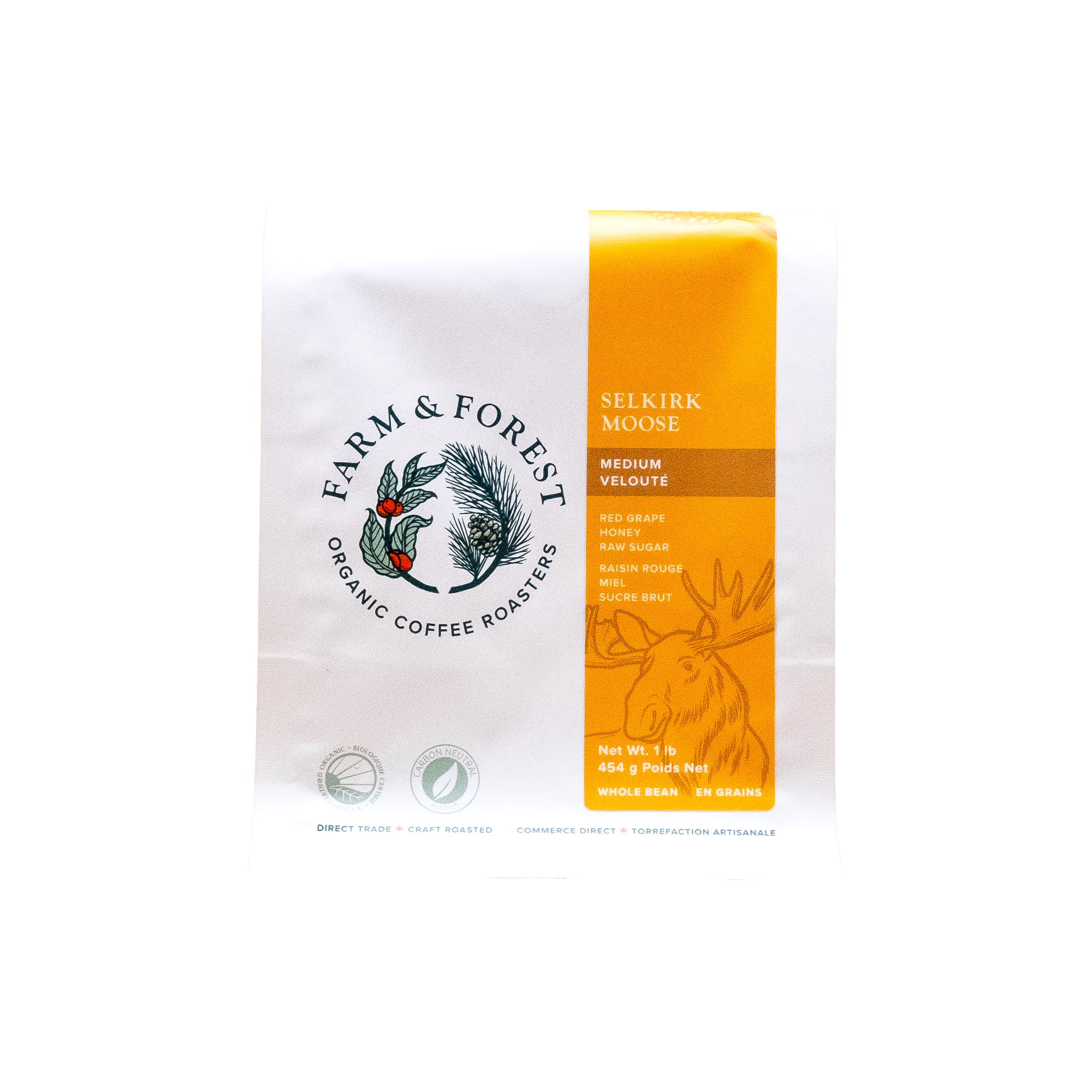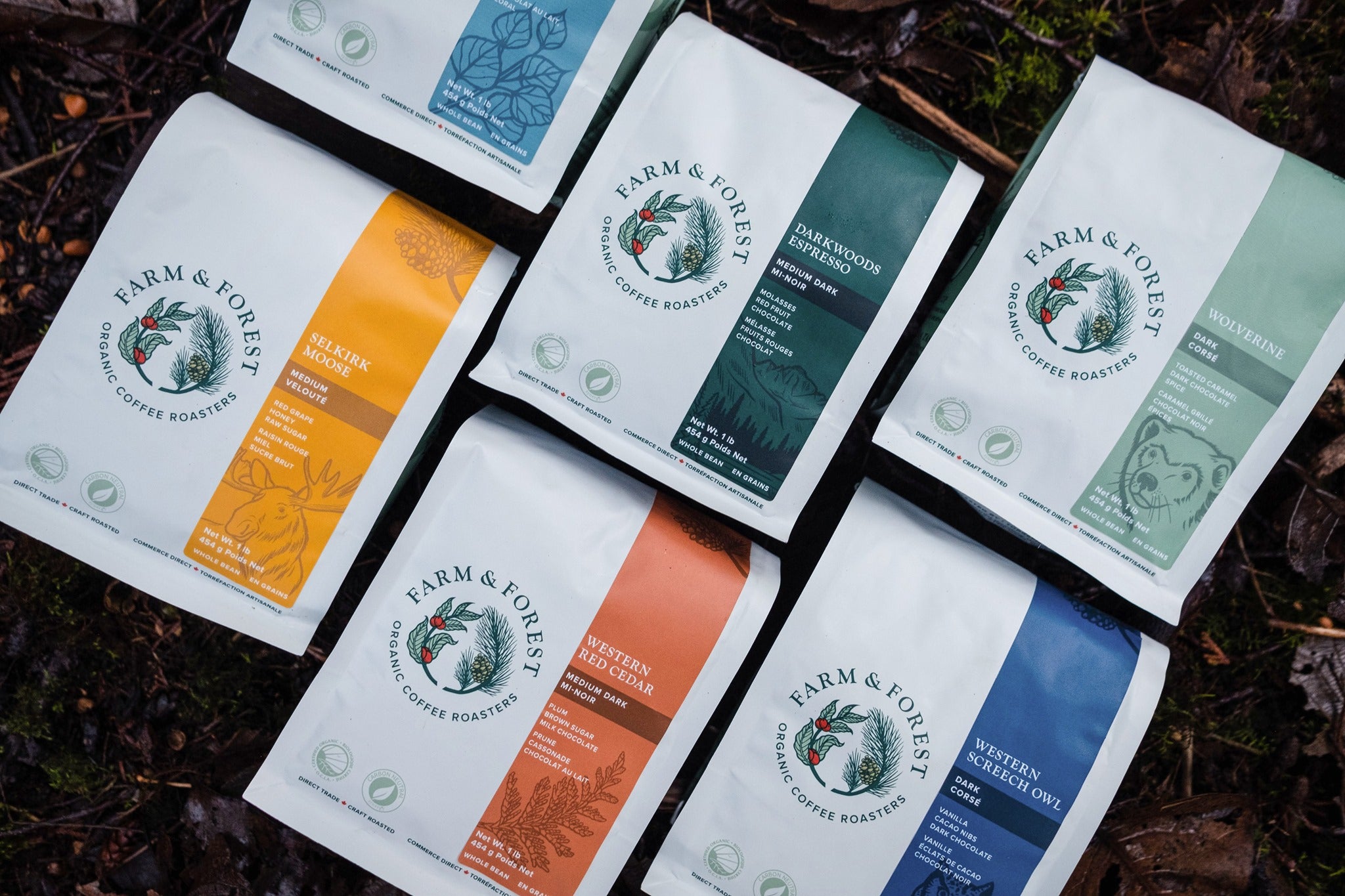What is coffee roast level? All you need to know about coffee roasting levels
In coffee, beans are treated as artisans treat their canvases, and roast level emerges as a crucial factor shaping the very essence of this beloved beverage. From the delicate subtleties of light roast to the robust depths of dark roast, each level of roasting imparts its unique flavor, aroma, and character to the coffee beans.
In this comprehensive guide, we embark on a journey to unravel the mysteries of coffee roasting levels. Here is what we’ll cover:
-
What is coffee roast level
-
What determines the roast level of coffee
-
Coffee roasting time
-
Coffee toasting temperature
-
Coffee roasting techniques
-
Flavour Profile Of Light Roast Coffee
-
Flavour Profile Of Medium Roast Coffee
-
Flavour Profile Of Dark Roast Coffee
-
Choosing Your Coffee Roast Level
What is coffee roast level
Coffee roast level refers to the degree to which coffee beans have been roasted, influencing their flavor, aroma, and appearance.
It is determined by the duration and temperature at which the beans are roasted, with various levels ranging from light to dark.
Each roast level offers distinct characteristics, catering to different preferences among coffee enthusiasts.
What determines the roast level of coffee
The roast level of coffee is determined by a combination of factors intricately woven into the roasting process. From the duration to the temperature of roasting, every element plays a pivotal role in shaping the final roast level of the beans. Understanding these determinants provides valuable insight into the art and science behind coffee roasting.
Coffee roasting time
The roast level of coffee is determined by a combination of factors intricately woven into the roasting process. From the duration to the temperature of roasting, every element plays a pivotal role in shaping the final roast level of the beans. Understanding these determinants provides valuable insight into the art and science behind coffee roasting.
- Shorter roasting times, typically associated with light roasts, preserve more of the beans' original flavors and acidity. During this phase, the beans undergo minimal caramelization and Maillard reactions, which are responsible for the creation of complex flavor compounds. As a result, light roast coffees often exhibit brighter, more acidic profiles with pronounced fruity or floral notes.
- Longer roasting times, typical of dark roasts, lead to deeper caramelization and Maillard reactions. This extended exposure to heat transforms the sugars and amino acids in the beans, creating rich, bold flavors with diminished acidity. Dark roast coffees are characterized by their robust, smoky, and sometimes bitter taste profiles, with notes of chocolate, caramel, or roasted nuts.
- Medium roasting times fall somewhere in between, striking a balance between the brightness of light roasts and the richness of dark roasts. They undergo a moderate roasting duration, resulting in a well-rounded flavor profile with moderate acidity and a pleasing depth of flavor.
Coffee toasting temperature
Coffee roasting temperature is a critical factor in determining the flavor profile of coffee beans. The temperature at which coffee beans are roasted also influences the chemical reactions that occur within the beans, ultimately shaping their flavor, aroma, and body. Here's how roasting temperature influences the flavor of coffee:
- Light Roast coffee beans are typically roasted at lower temperatures, usually between 350°F to 400°F (177°C to 204°C).
- Medium Roast coffee beans are roasted at slightly higher temperatures, typically ranging from 400°F to 430°F (204°C to 221°C).
- Dark Roast coffee beans are roasted at higher temperatures, generally between 430°F to 450°F (221°C to 232°C) or even higher.
Coffee roasting techniques
Coffee roasting techniques encompass a variety of methods used by roasters to apply heat to coffee beans and achieve desired flavor profiles. Here's an overview of common coffee roasting techniques and how they influence flavor:
Drum Roasting is one of the most traditional and widely used methods in coffee roasting. In this technique, coffee beans are loaded into a rotating drum roaster, where they are heated by direct contact with the drum's surface.
The rotation of the drum ensures even heating and consistent roasting of the beans. It allows for precise control over temperature and airflow, enabling roasters to develop specific flavor profiles.
Air Roasting, also known as fluid bed roasting, involves suspending coffee beans in a stream of hot air. The beans are agitated continuously, allowing for even roasting and rapid heat transfer.
It typically results in a cleaner cup profile with brighter acidity and more pronounced fruitiness. This method is favored for its ability to highlight the unique characteristics of single-origin beans and specialty coffee varieties.
Direct Flame Roasting involves roasting the beans over an open flame or wood fire. This method imparts a distinct smoky flavor to the beans, reminiscent of traditional roasting practices.
It requires skill and experience to control the intensity of the flame and prevent uneven roasting or scorching. The resulting flavor profile may include deep, rich, and slightly charred notes, with a rustic and robust character.
Hybrid Roasting combines elements of different roasting techniques to achieve unique flavor profiles. For example, some roasters may use a combination of drum roasting and air roasting to leverage the advantages of both methods.
It allows for greater flexibility and creativity in developing custom roasting profiles tailored to specific beans or blends.
Flavour Profile Of Light Roast Coffee
Light roast coffee is celebrated for its vibrant acidity, intricate flavor notes, and delicate body, making it a favorite among coffee connoisseurs seeking a nuanced and complex drinking experience. Here's an exploration of the flavor profile of light roast coffee:
-
Bright Acidity, that adds liveliness and vibrancy to the flavor profile. This acidity is often described as crisp and tangy, reminiscent of citrus fruits like lemon or grapefruit. The acidity in light roast coffee contributes to its refreshing and palate-cleansing qualities, making it an invigorating choice for morning brews.
-
Floral and Fruity Notes, that delivers aromatic complexity, often featuring floral and fruity notes that tantalize the senses. Aromas such as jasmine, honeysuckle, or lavender may be present, adding a delightful fragrance to the brewed coffee. Fruity flavors like berries, stone fruits, or tropical fruits can also emerge, offering a sweet and juicy undertone to the cup.
-
Sweetness and complexity can be present despite light roast coffee’s light body. The sweetness in light roast coffee is often subtle and nuanced, with hints of caramel, honey, or sugarcane complementing the bright acidity and fruity notes. Complex flavor layers unfold with each sip, revealing intricate nuances and subtle undertones that keep the palate engaged and intrigued.
-
Clean Finish is a prized characteristic of light roast coffee, leaving the palate refreshed and satisfied. The absence of heavy roasting notes allows the inherent flavors of the beans to shine through, resulting in a pure and unadulterated coffee experience. The clean finish of light roast coffee makes it an excellent choice for discerning drinkers who appreciate clarity and subtlety in their cups.
Flavour Profile Of Medium Roast Coffee
Medium roast coffee strikes a harmonious balance between the bright acidity of light roasts and the richer, fuller-bodied flavors of dark roasts. Known for its versatility and wide appeal, medium roast coffee offers a nuanced flavor profile that satisfies a broad range of coffee drinkers. Here's an exploration of the flavor profile of medium-roast coffee:
-
Balanced Acidity: Medium roast coffee typically retains a moderate level of acidity, providing a pleasant brightness without overwhelming the palate. The acidity in medium-roast coffee is often well-integrated, offering a subtle tanginess that enhances the overall flavor profile. It contributes to the refreshing and lively character of medium roast coffee, making it an inviting choice for daily enjoyment.
-
Nutty and Chocolatey Notes: Medium roast coffee is known for its rich and comforting flavor profile, often featuring prominent nutty and chocolatey notes. Aromas of toasted almonds, hazelnuts, or roasted peanuts may be present, adding depth and complexity to the brew. Chocolate flavors, ranging from dark cocoa to milk chocolate, lend a satisfying sweetness and richness to medium roast coffee, reminiscent of indulgent desserts.
-
Caramelized Sweetness: Medium roast coffee exhibits a delightful caramelized sweetness that enhances its overall appeal. Caramel and toffee notes infuse the brew with a warm and inviting sweetness, balancing the acidity and adding a layer of depth to the flavor profile. This sweetness is often accompanied by subtle hints of brown sugar or maple syrup, creating a smooth and velvety mouthfeel.
-
Balanced Body and Complexity: With a well-rounded body that strikes a perfect balance between light and dark roasts. The medium body provides a satisfying mouthfeel without being overly heavy or oily, allowing the flavors to shine through. Medium roast coffee is prized for its complexity, with layers of flavor that unfold gradually, revealing nuances of spices, fruits, and earthy undertones.
- Smooth Finish: It typically boasts a smooth and clean finish, leaving a lingering sweetness on the palate. The absence of harsh or bitter aftertastes makes medium roast coffee exceptionally easy to drink, appealing to a wide range of taste preferences.
Looking for your next best medium-roast coffee?
The Western Red Cedar Coffee has an immensely versatile flavour profile that reminds us of plum, brown sugar, and milk chocolate. The gentle, fruity acidity and light sweetness adds just enough sparkle to the creamy cocoa undertones, culminating in a cup that’s delicious on its own or with milk. This is definitely a crowd-pleaser!
CoffeeFlavour Profile Of Dark Roast
Dark roast coffee offers a bold and intense flavor profile, characterized by its deep, rich, and robust qualities. Through extended roasting at high temperatures, dark roast coffee undergoes transformative chemical reactions that impart distinct flavors and aromas. Here's an exploration of the flavor profile of dark roast coffee:
-
Bold and Pronounced Body: Known for its full-bodied and substantial mouthfeel, which coats the palate with a rich and velvety texture. The prolonged roasting process caramelizes the sugars in the beans, resulting in a dense and syrupy consistency that contributes to the coffee's luxurious feel.
-
Low Acidity: It typically exhibits minimal acidity, as the extended roasting process diminishes the presence of acidic compounds in the beans. This low acidity contributes to the smooth and mellow character of dark roast coffee, providing a gentle backdrop for its bold flavors to shine.
-
Rich and Intense Flavor: Renowned for its bold and intense flavor profile, characterized by deep caramelization and Maillard reactions. The extended exposure to high temperatures leads to the development of robust flavor compounds, including notes of dark chocolate, roasted nuts, and caramelized sugars. These flavors are often accompanied by hints of bittersweetness and smokiness, adding complexity and depth to the brew.
-
Smoky and Earthy Undertones: It may also feature smoky and earthy undertones that evoke sensations of wood smoke, charred wood, or earthy soil. These nuanced flavors contribute to the coffee's complexity, imparting a sense of depth and character that lingers on the palate.
-
Lingering Finish: Dark roast coffee typically boasts a long and lingering finish, with flavors that persist on the palate well after the last sip. The absence of sharp acidity allows the rich and bold flavors of dark roast coffee to linger, leaving a lasting impression of depth and satisfaction.
Looking for your next best dark-roast coffee?
Brewed with a dripper or a French press, the Wolverine Organic Coffee reminds us of toasted caramel and dark chocolate. A hit of spice tempers those rich, warm flavours and brings a bit of pep to the smooth, weighty mouthfeel. The result is a pleasing cup that pairs beautifully with milk, easy to enjoy all day long.
Choosing Your Coffee Roast Level
Choosing the right coffee roast level is a crucial step in ensuring a satisfying and enjoyable coffee-drinking experience. Here's a guide to help you choose your ideal coffee roast level:
Flavor Preferences:
- Light Roast: If you prefer bright acidity, floral and fruity notes, and a clean finish, opt for a light roast. Light roast coffees are known for their vibrant flavors and delicate body, making them perfect for those who enjoy nuanced and complex brews.
- Medium Roast: For a balanced and versatile cup of coffee with nutty, chocolatey, and caramelized flavors, medium roast is an excellent choice. Medium roast coffees offer a well-rounded flavor profile that appeals to a wide range of tastes.
- Dark Roast: If you crave bold and intense flavors with rich, smoky, and bittersweet notes, dark roast coffee is the way to go. Dark roast coffees are prized for their full-bodied texture and robust character, making them ideal for those who prefer strong and hearty brews.
Brewing Method:
- Light Roast: Light roast coffee is well-suited for brewing methods that highlight its delicate flavors and acidity, such as pour-over, drip, or Aeropress. These methods allow you to experience the nuanced characteristics of light roast coffee without overpowering it with heavy extraction.
- Medium Roast: Medium roast coffee is versatile and adaptable to various brewing methods, including espresso, French press, and cold brew. Its balanced flavor profile and moderate acidity make it a suitable choice for both black coffee and milk-based drinks.
- Dark Roast: Dark roast coffee is best suited for brewing methods that emphasize its bold flavors and full-bodied texture, such as espresso or French press. These methods extract the rich oils and intense flavors characteristic of dark roast coffee, resulting in a satisfying and indulgent cup.
Experiment and Explore:
Don't be afraid to experiment with different roast levels to discover your personal preferences. Try sampling a variety of light, medium, and dark roast coffees from different regions to experience the full spectrum of flavors and aromas.
Keep in mind that roast level is just one factor influencing coffee flavor. If you want to learn more we prepared several guides on our Coffee Blog.
And here is a selection of our directly sourced organic coffees from some of the world’s finest growing regions that are roasted at our carbon-neutral facility, nestled near the shores of the Pacific Ocean. And while getting great coffee you help us protect our planet. as 15¢ from every pound of coffee sold is donated to the Nature Conservancy of Canada to protect habitat for our nation’s wildlife.
